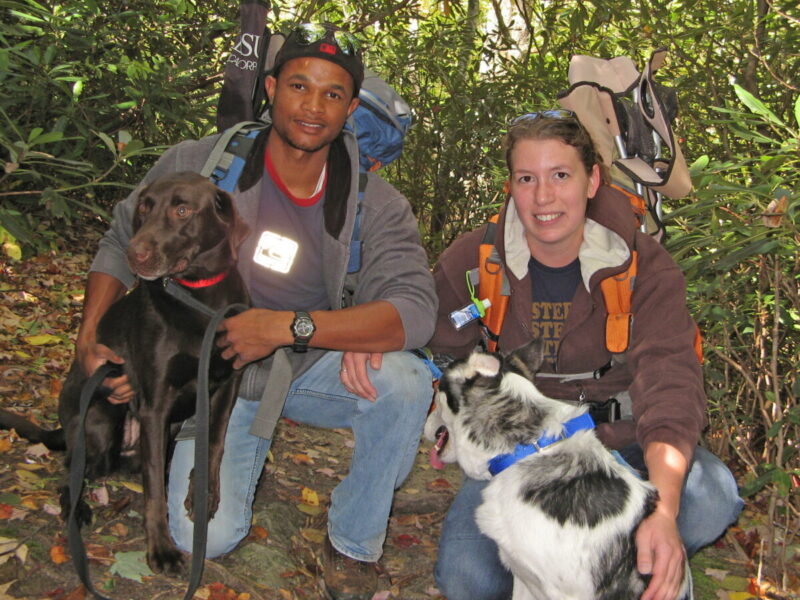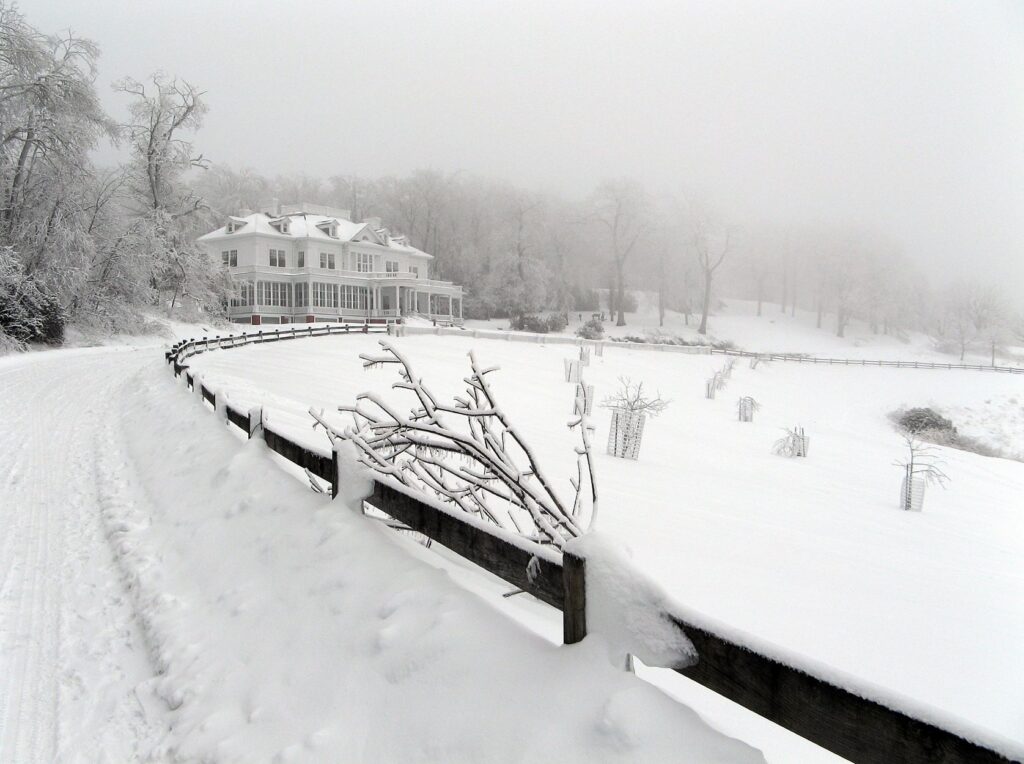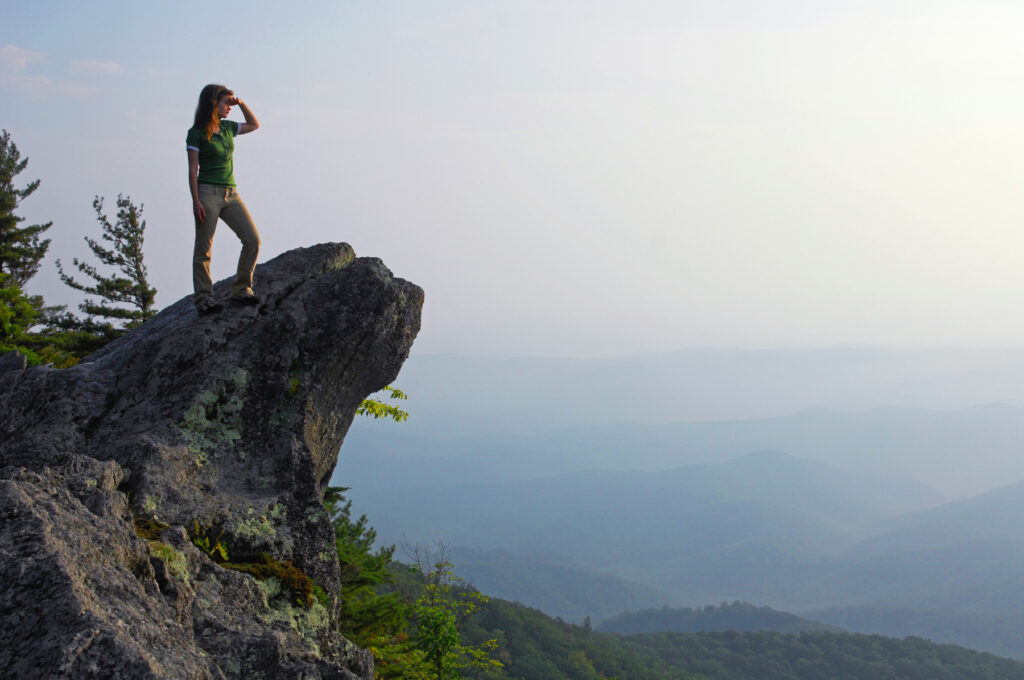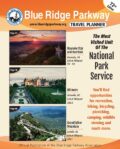
When the temperature drops below freezing and ice forms on the Parkway, portions of the road are closed to vehicle travel until they are safe and clear. But visitors can still walk, bike or ski on closed portions of the Parkway or on accessible Parkway trails. Plus, there are lots of places to stay and things to do in nearby communities.
Here are some things you can do when the Parkway is closed:
You can enjoy a visitor center. Several are open year-round like the Asheville Visitor Center, the Folk Art Center, the Museum of North Carolina Minerals and the Explore Park Visitor Center. Some even have trails accessible from the parking lot.
You can hike on Parkway trails. You may park at a Parkway access point (find these on our interactive map by selecting the Access Points filter- click on each pin for details) as long as your vehicle is completely off the road and not blocking a gate. Parking on a gravel shoulder helps protect road edges and grassy shoulders and prevent resource damage. Check out which Parkway sections are closed on the NPS Road Closure Chart. We have recently added trailheads to our Interactive Map, so if the place you’d like to hike along the Parkway is not accessible, you can look for another more accessible trailhead nearby. Other great resources for finding trails (keep an eye out for ones that are not highly-trafficked) are Carolina Mountain Club, Romantic Asheville, Friends of the Mountains-to-Sea Trail and AllTrails. Keep in mind that many of the trails that are accessible from the Parkway may actually be on state park, national forest, or other land, so make sure to check with the land manager of the area you want to visit before heading out.

Photo by William A. Bake
You can camp at any number of privately-owned campgrounds found along the Parkway. Most offer varying forms of electric, water, and sewer hookups. Check with each to determine if they are open. You can find lodging along the Parkway by visiting our Interactive Map and selecting the lodging category you are interested in. Click on the businesses near to your desired location to find out more information. If you’d prefer a public campground, visit recreation.gov, enter the location name (or you can be general and just enter a state such as North Carolina), and enter the dates you’d like to visit, and then click on the colored icons (gray indicates that the site isn’t available) to check the availability of each site in your desired destination. For reservable sites, you can make reservations right on this website. Keep in mind that public campgrounds may not have electric, water, or sewer hookups at each site; some don’t even have showers available.
You can visit attractions along the Parkway. You can select various kinds of attractions and lodging on the Interactive Map. Remember to see what’s open and any restrictions in place prior to visiting; you’ll need to check with each site individually via telephone or website to confirm their hours, mask requirements, whether reservations are required, etc. If you know what area of the Parkway you’d like to visit, you can also search for amenities found in a particular Parkway region by selecting that region on our homepage at www.blueridgeparkway.org.

The Blowing Rock
You can do some research and go where everyone else isn’t. Find a closed portion of the Parkway (preferably not north Asheville, as this section is highly used on warm winter days) and go for a stroll, enjoy a picnic, watch a sunset, or even view the stars. Avoid crowded parking areas and seek solitude. You’ll be more likely to be able to focus on the scenery and wildlife along the roadway than on dodging other people. Check out the Blue Ridge Parkway Closure Chart, Shenandoah NPS site or Great Smoky Mountains NPS site to see if there are sections of the road near you that are closed but still accessible to pedestrian or cyclist traffic.
You can protect others by following posted signage, keeping a distance between yourself and others, choosing outdoor activities, and wearing a mask that covers your nose and mouth if you can’t keep a safe distance from others. Visit early in the day, later in the evening or on a weekday. And follow Leave No Trace Principles like taking all your trash with you, leaving what you find, not feeding wildlife (either on purpose or by leaving food unattended), staying on durable surfaces (not stepping on fragile plants or ecosystems off the trail), and being respectful by yielding to other hikers along the trail and keeping your dog on a leash.
There have been many challenges as we navigate so many changes in how things operate in the world around us. This year, let’s think outside the box, do new things, and find ways to travel safely so that we protect ourselves and others while we enjoy the beauty of the natural world around us.

